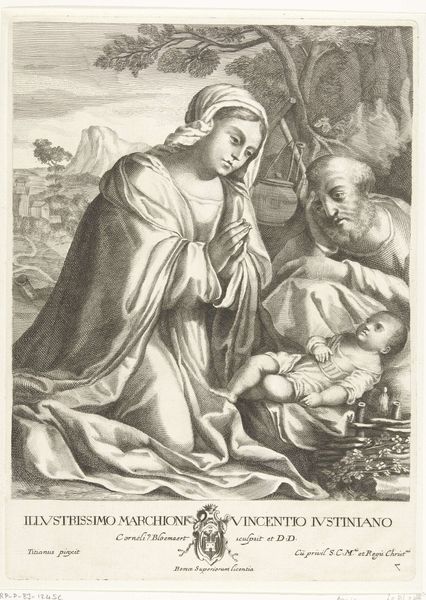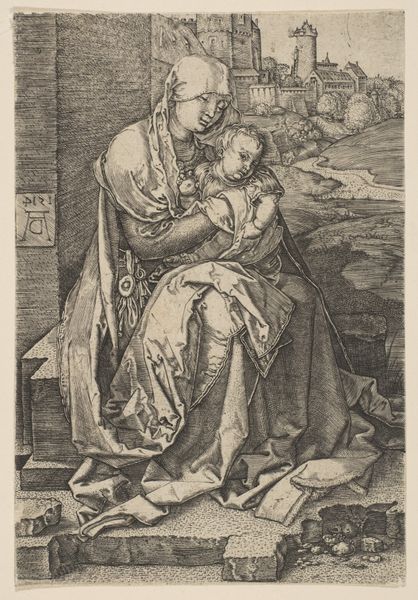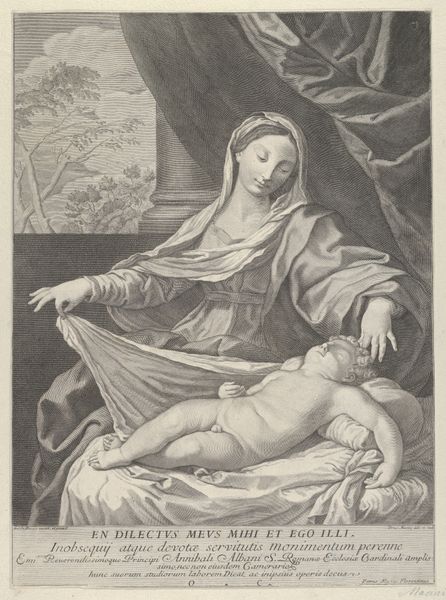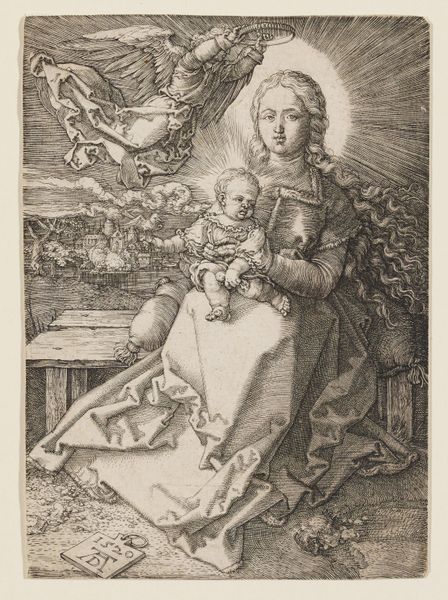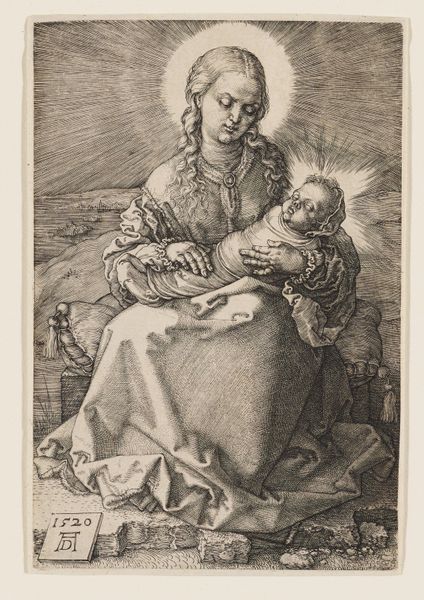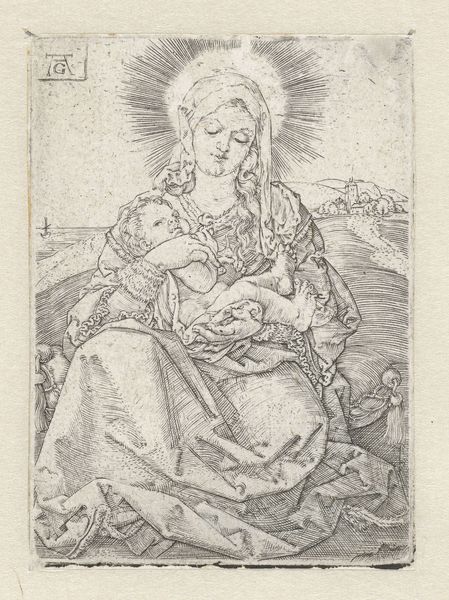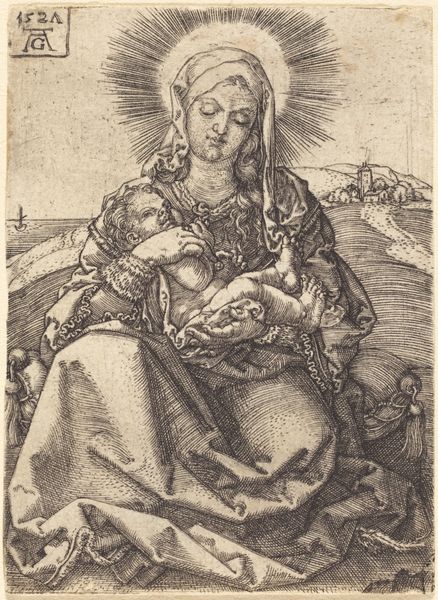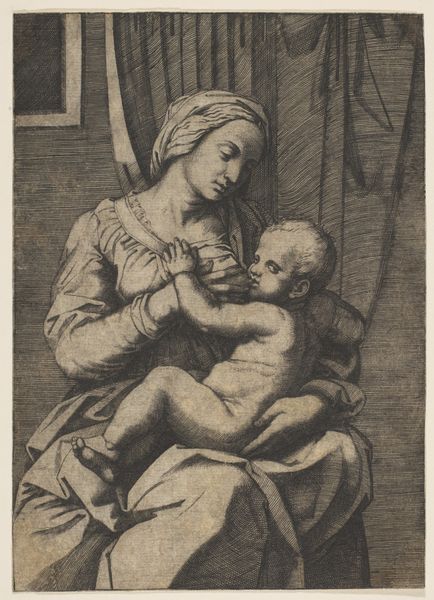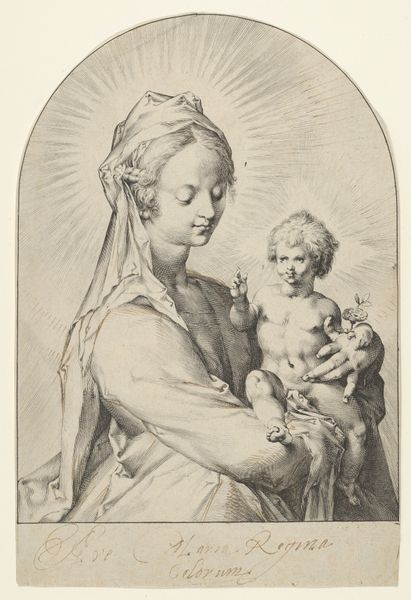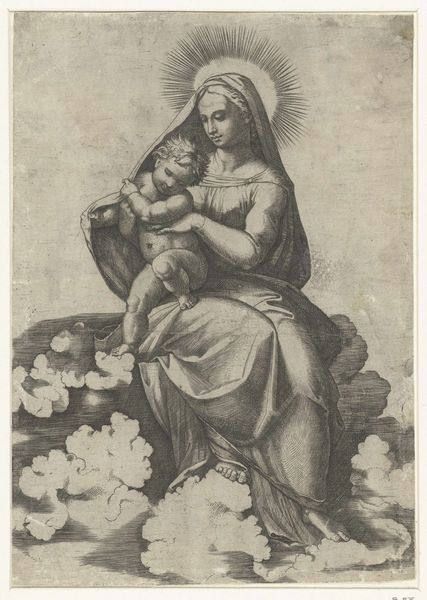
print, engraving
#
portrait
# print
#
figuration
#
history-painting
#
italian-renaissance
#
engraving
Dimensions: width 204 mm, height 286 mm
Copyright: Rijks Museum: Open Domain
Curator: Well, I’m immediately struck by the sheer tenderness of this image. The way Mary gazes down at the Christ Child, utterly absorbed... there's a peacefulness, almost a weariness in her expression. Editor: You've captured it perfectly. This is "Maria zoogt het Christuskind," or "Mary Nursing the Christ Child" in English, an engraving by Julius Goltzius from around 1560 to 1595. You can find this intimate moment captured at the Rijksmuseum. But let's dive deeper into the symbology. What draws your eye next? Curator: I think the vulnerability that comes through, and this engraving is so interesting as the format itself. A print allows for a democratized intimacy... But how might Goltzius use this visual language to reinforce the role of Mary here? Editor: Absolutely. Notice the inscription beneath the image, "Herodem fugiens, Ægyptia regna petisti" – "Fleeing Herod, you sought the kingdom of Egypt." It explicitly links this image to the Holy Family's flight from persecution. The very act of nursing becomes an act of protection, of sustenance against worldly threats. Curator: Right! And it’s interesting because it feels like the larger political world shrinks down to the scale of the mother and child. Everything becomes about sustenance and immediate safety. You’ve got that flower arrangement on the side to one side. Reminds you, doesn’t it, that this serenity exists on the precipice? It's temporary, poised against a hostile landscape. Editor: That's astute. Flowers often symbolize life's fragility, the beauty that must inevitably fade, but is this backdrop not merely to emphasize and celebrate the continuity of spiritual nourishment, of faith passed down. The book in the corner looks as if it's left opened as if its knowledge can at any point give her refuge... And, look closely... that background, a promise of an ideal setting to aspire to: it almost glows there. It tells a timeless story about protection, nurture, and the quiet strength within what appears ordinary. Curator: The way you read this art form helps it take shape in time! I love how looking at Goltzius’ "Maria zoogt het Christuskind" isn't just a glimpse into the past, but an echoing, present question about care, vulnerability, and the choices we make to protect each other, or our own ideals.
Comments
No comments
Be the first to comment and join the conversation on the ultimate creative platform.

